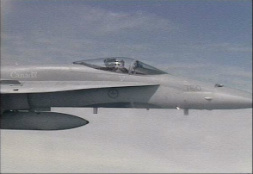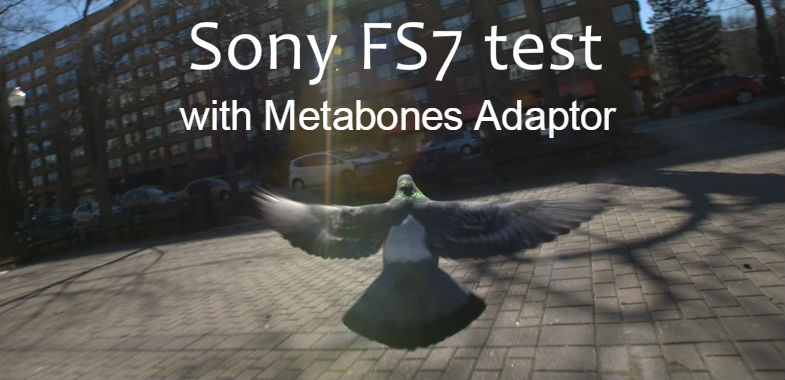Shooting a fighter jet highjacking excercise

It was quite an experience shooting a fighter jet flying so extremely close to our plane!
While working as a news videographer with CTV news in 1998, I had the opportunity to film behind the scenes on a NATO military training exercise off the shore and in the air around Halifax, Nova Scotia. This was a real world simulation of the high-jacking of a Challenger Jet. For years the Challenger has been the aircraft of choice to transport Military officials. As we flew offshore we were informed that the jet was in a high-jacking situation. At this point the pilot told us the mission was for three F18s to converge on our flight path, controlling our airspace. There would be one flying above the challenger and the other 2 swooping in sideways to an almost “wing tip to wing tip” configuration on either side. I was shooting with a Sony betacam and wide angle lens. The F18 fighter jet was a barely visible dot on the horizon and then – within about 20 seconds – it was almost full frame as I shot out a window. When I zoomed in my frame was this medium shot of the pilot in the cockpit, looking toward the Challenger and gauging the distance of his wing tip to ours. He was staring straight at the camera while flying a jet at high speed all the while maintaining a very narrow gap. As a video cameraman I have filmed plenty of military exercises but never anything that demonstrated such precision and happened so quickly.
I am presently working with the Royal Canadian Navy, producing part II of a documentary on the refit of our Halifax Class Frigates which is preparing them for their next 20 years of service. You can view a sample time lapse of HMCS St. John’s entering dry dock at The Irving Shipyard in the “Our Work” section of this website.
Sony FS7 handheld test with Canon 16-35mm lens & Metabones Adaptor

As this was one of my first tests with the Sony PXW-FS7 HD/4K video camera I decided to give it a real world experience.
A 1 hour walk down Spring Garden Road. With the camera basically straight out of the box and the firmware upgraded I chose the Standard Rec 709 setting, added a Metabones adapter, Canon 16–35mm lens and started shooting.
Check out the rest of this review and ungraded results on our VIMEO page, Sony FS7 Metabones Test
~ Chris Murphy